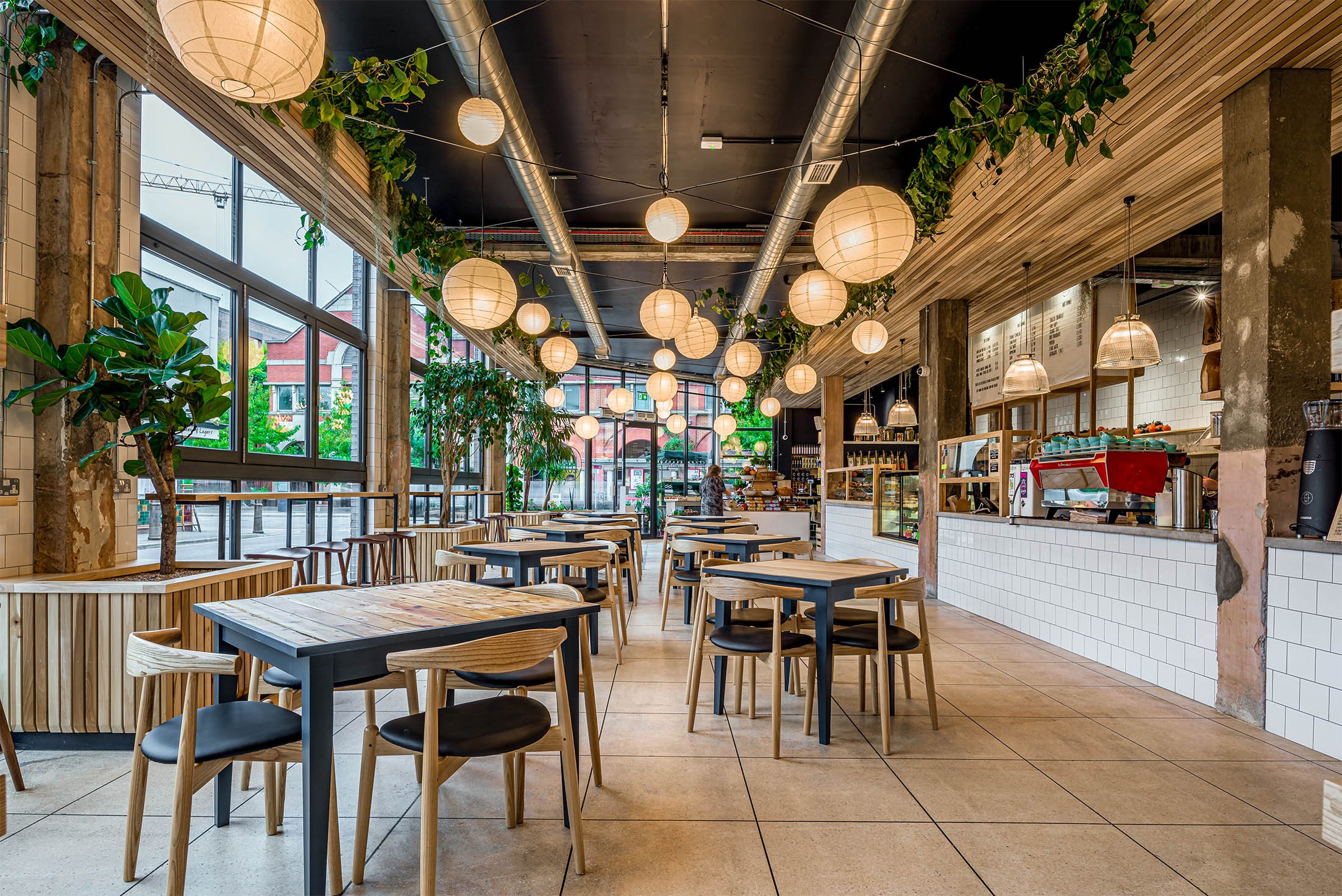Embracing experiential design for future-looking hospitality venues
Published by Interior Designer & written by Emma Carter, Creative Director, Phoenix Wharf
In an age of overwhelming choice, customers today are looking for much more than a place to dine from their hospitality choices.
To deliver memorable experiences, interior design must constantly reinvent and evolve, moving beyond the thoughtful amalgamation of colours, textures, lighting, and spatial flow, to consider personalisation, wellbeing and the role of technology in order to surprise and delight in new creative ways.
The immersive guest experience
At Phoenix Wharf, we constantly challenge our team and our clients to push our design executions to deliver fresh, bespoke immersive brand experiences that are delivered with substance.
Oh So Yum!
Collaborating with BBC The Apprentice winner, Harpreet Kaur, was a great opportunity to do just this. The 144 sq. m, 55-cover candy-coloured fantasia, offers an intense and vibrant Willy Wonka-style immersive experience that feels just like stepping inside the brand. Big, bold, bright colours consume visitors within the digital-first 3D environment, complete with added textures and playful elements such as a chocolate fountain, photo booth and textured walls, ensuring customers can personalise their experience and capture numerous memories.
Bristol Loaf
Bristol Loaf, Bedminster, part of the growing South West artisan bakery and coffee shop collective, delivers a very different experience. Designed to deliver a safe, calming haven away from the outside world, it’s heavily influenced by the sustainability and community values of the brand. The interiors enhance the natural light entering the building, with a dark ceiling, natural colour tones, and wood adding warmth and intimacy.
The design plays on sensory elements such as the smell of the working bakery behind the counter, the sunlight streaming through the windows, the warmth from the large bread ovens, and the feeling of being surrounded by plants to induce guest wellbeing and serenity.
Leaning into the opportunities of technology
Technology is continuing to provide exciting opportunities for brands keen to personalise guest experiences beyond the norm. Reactive technology can already adjust sound, lighting, and smells. It can even inform behind-the-scenes functionality to enhance the guest experience and align with brand values. Bristol Loaf recycling the heat from the bread ovens to warm their restaurants, and having various milks deposited directly from a VAT to eliminate waste, is a great example of this.
Working with a South West-based University, we’re currently exploring the use of an urban cultivator in which fresh salads can be grown and picked to order. We’re also looking at hot and cold food lockers with a digital app-based system so students can order when studying from the library and their food will be kept at the right temperature for them until they’re ready to collect it.
Experiential design for the future
With Gen Zers now make up 40% of consumers with a spending power of over $140 billion (Business Insider), we’re moving into an era when almost half of all hospitality visitors will be digital natives. This means technological integrations will be more important than ever, and seamless digital experiences – from the opportunity to book or order online to sharing across social platforms, will be essential.
AI will begin to play a more significant role in driving more personalised experiences with brands that harness the power of their data to connect with this generation in new and interesting ways remaining current and popular. This generation is more comfortable blending their professional and leisure activities and we’re expecting to help fuse activities within one venue. For example, a hotel or large restaurant may have spaces for cultural exchange, social interactions, co-working, as well as drinking or dining.
For those not sure where to start, we recommend avoiding gimmicks for the sake of appearing ‘experiential’ but thinking about how the space works in a way that customers want to tell their friends about it.



